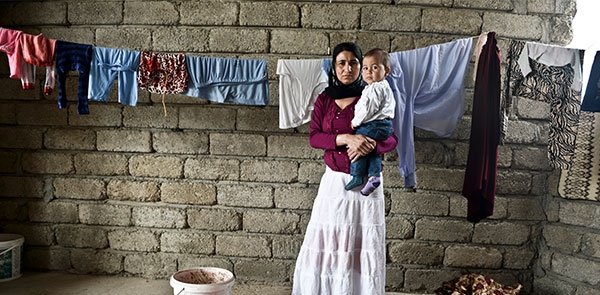|
Seven years after ISIS attempts to extinguish them, 2,868 Yezidis are still missing in northern Iraq.
On August 3rd, 2014, ISIS launched a brutal attack on the area around northern Iraq’s Mount Sinjar. ISIS sought to purge the region of the Yezidis, a small religious community who have called the area home for centuries.
At the time, approximately 400,000 Yezidis lived in the Sinjar region. But by the month’s end, an estimated 5,000 Yezidi men had been executed and an estimated 7,000 Yezidi women and children were sold into sexual slavery. Tens of thousands of Yezidis fled to other parts of the region, and beyond, to places like Europe. Nearly 210,000 remain displaced to this day.
In 2016, the U.S., United Nations, and others declared the atrocities committed by ISIS a case of genocide. It was the first time since 2004, when the U.S. had declared genocide in the case of Darfur.
Despite all that they suffered, remarkably, Yezidi survivors continue to be discovered and rescued to this day.
Two Yezidi women captured by ISIS during the genocide in 2014, and presumed by many to be dead, were recently found and rescued from captivity. One was discovered in Baghdad by Iraq’s National Intelligence Service. The other, Ziri Mutou Shafan, was found in Deir Ezzor (a region in eastern Syria controlled by the Syrian Democratic Forces), by the Asayish—the police forces of the Autonomous Administration of North and East Syria. Together with the help of the Yezidi House in Al Hasakeh and officials of the Autonomous Administration, Shafan has now been reunited with her family in Sinjar.
Similarly, two Yezidi children were discovered in Turkey last year and also reunited with their family in the Kurdistan Region of Iraq. The two siblings, Emir and Emira Hudeda, were four and six years old when their parents were killed by ISIS. The two children reportedly had been living in Turkey since 2017 and were identified through DNA testing.
But these heartwarming stories of survival also remind us of a dark reality. Seven years after the genocide, there are still some 2,868 Yezidis whose whereabouts are unknown. Some of these Yezidi women, girls, and boys may still be held in captivity—possibly still used as slaves. Others may be free, but too fearful to identify openly as Yezidi. By one estimate, there may be as many as 250 Yezidis in hiding in the Al Hol camp alone.
When ISIS was finally defeated in Baghouz, some enslaved Yezidis were able to escape. But others were not so lucky—they were simply sold to some of the many other armed groups operating in Syria. At least five Yezidis have been discovered in Idlib, which is now a stronghold of Hayat Tahrir al-Sham.
The Free Yezidi Foundation has called upon the Global Coalition to Defeat Daesh, the Iraqi Government, the Kurdistan Regional Government, the Autonomous Administration of Northeast Syria, Interpol, UNITAD, UNAMI, and other stakeholders to craft a plan and mount a serious effort to locate the estimated 2,868 Yezidi abductees who may be still alive and suffering. “When genocide is committed, it must be seen,” said Nadia Murad, Nobel Prize winner and Yezidi human rights activist. “People must look at it with open eyes, not minimize its impact.”
|











